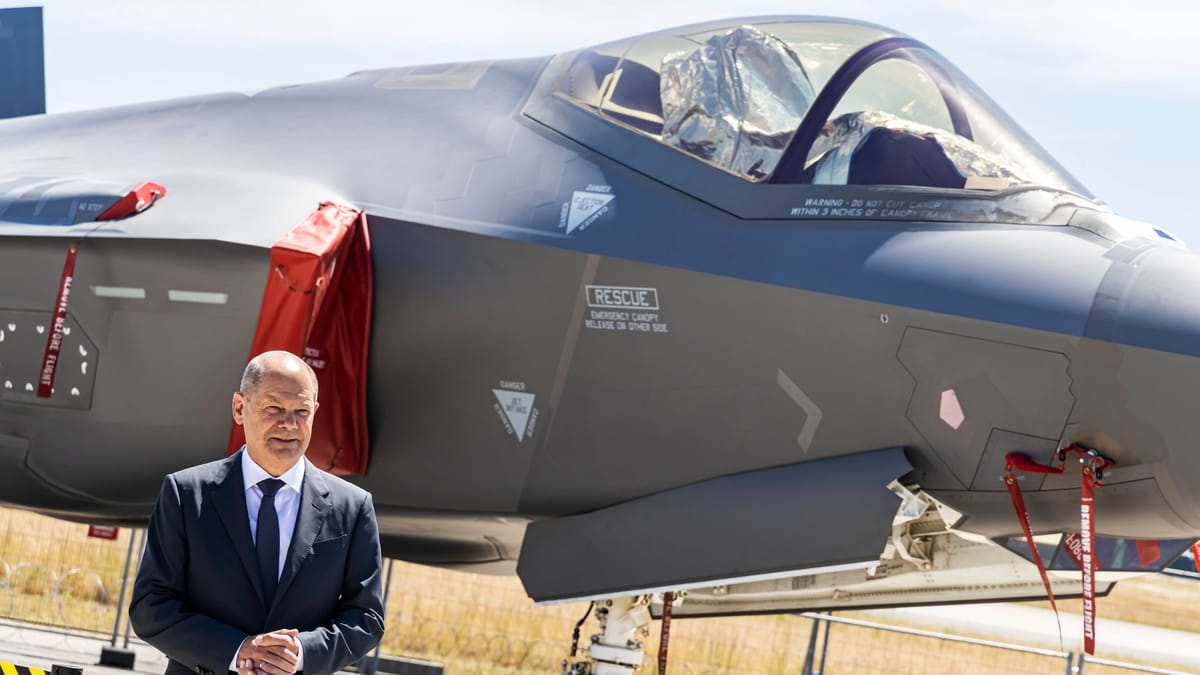First countries reconsider their orders, Portugal has now canceled, Turkey now wants Eurofighters. Eurofighter, Gripen and Rafale as alternatives.
In Europe, and particularly among the USA's NATO partners, uncertainty about political and military relations between the USA under Donald Trump and Europe has been growing steadily since his inauguration in January 2025. Trump's statements and especially his actions in recent weeks have shown unmistakably that the USA is no longer a reliable partner for Europe (and presumably also NATO) and does not want to be.
Especially those European countries that, in response to Russia's war of aggression against Ukraine F-35 fighter jets from Lockheed Martin $LMT (+0.61%) worth well over 250 billion euros are now faced with a critical dilemma:
Technically, Europe's F-35 fleets can be deactivated by the US at any time, as each aircraft relies on US-controlled launch codes and proprietary US communication and navigation systems (see also the deactivation of Ukrainian HIMARS systems (from Lockheed Martin $LMT (+0.61%) ) in the last few days. Source: Tagesspiegel, March 2025). In the event of a crisis, the USA could practically paralyze the European air forces or at least prohibit missions. The USA had already done this with Egyptian F-16 fighter jets in 2014. (Source: T-Online, February 2025)
Since 2022, 12 European countries have ordered around 550 F-35 fighter jets (in different variants and versions):
- Germany: 35
- Romania: 32 (additionally planned: 16)
- Czech Republic: 24
- Finland: 64
- Switzerland: 36
- Netherlands: 52 (including additional orders)
- Poland: 32
- Belgium: 34
- Italy: 90 (60 F-35A and 30 F-35B)
- Norway: 52
- United Kingdom: 48 (planned: 138)
- Denmark: 27
The first countries are already taking action: Portugal recently announced that it was halting the planned procurement of F-35 fighter jets and looking at European alternatives instead.
"The Portuguese Defense Minister Nuno Melo has announced that the country will not purchase F-35 fighter jets from the United States in view of the current geopolitical situation and the unpredictability of US policy. Instead, alternatives from European production will also be considered." (Source: Poder Aéreo, March 2025)
Turkey also recently received a concrete offer for 40 Eurofighter jets from Airbus $AIR (+1%) BAE Systems $BA. (-0.1%) and Leonardo $LDO (+0.17%) - a clear sign of distancing itself from the USA.
"Turkey plans to procure a total of 40 Eurofighter Typhoon Tranche 4 fighter jets in the form of 20+20. All Tranche 4 jets, which represent the most advanced Typhoon configuration for air-to-air combat, will be newly produced.
However, Ankara can also procure a number of used Typhoons for training purposes. This possibility is also currently under discussion." (Source: Al-Monitor, March 2025).
If other European countries follow these examples, European fighter aircraft manufacturers could benefit considerably. Now, fighter aircraft are not of-the-shelf products that are mass-produced (with the exception of the F-35, unfortunately). Germany primarily opted for the F-35 because only the F-35 can be equipped with the nuclear weapons stationed in Germany (the use of nuclear weapons stationed in Germany - even just transportation from A to B - requires joint technical approval by Germany and the USA).
In my opinion, Gripen (Saab $SAAB B (+0.46%) ) and Eurofighter (Airbus $AIR (+1%) BAE Systems $BA. (-0.1%) Leonardo $LDO (+0.17%) MTU Aero Engines $MTX (+0.52%) etc) would be the most attractive alternatives in the short term. The Saab Gripen has an almost unbeatable price-performance ratio (especially thanks to the low service and maintenance costs) and the infrastructure for Eurofighter is already solidly developed. Dassault Aviation $AM (+0.15%) (Rafale) should of course not be underestimated either, but I see it in 3rd place.
I can well imagine that this costly security dilemma is currently being hotly debated in Europe's defense ministries and that exit strategies are already being evaluated. I can also imagine that European buyers of the F-35 are holding on to their canceled orders as leverage in case Trump imposes even more dramatic punitive tariffs or even escalates to a whole new level. In addition to the orders for F-35s, the Europeans are also likely to be reviewing their orders for HIMARS and the like.
However, one thing is already clear to the Europeans: Europe must become sovereign as quickly as possible - in terms of security policy, economy and technology - and can no longer rely on the USA. After Portugal and probably also Turkey, I expect more F-35 dominoes to fall in the near future.
Sources:



